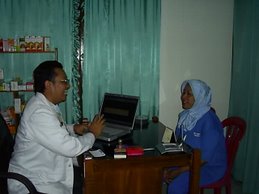Amlodipine is used alone or in combination with other medications to treat high blood pressure and chest pain (angina). It lowers blood pressure by relaxing the blood vessels so the heart does not have to pump as hard. It controls chest pain by increasing the supply of blood to the heart. If taken regularly, amlodipine controls chest pain, but it does not stop chest pain once it starts.
Amlodipine controls high blood pressure and chest pain (angina) but does not cure them. Continue to take amlodipine even if you feel well. Do not stop taking amlodipine without talking to your doctor.
Special precautions
Before taking amlodipine,
Tell your doctor and pharmacist if you are allergic to amlodipine or any other medicines.
Tell your doctor and pharmacist if you are taking vitamins, nutritional supplements, and herbal products.
Tell your doctor if you have or have ever had heart failure or liver disease.
Tell your doctor if you are pregnant, plan to become pregnant, or are breast-feeding. If you become pregnant while taking amlodipine, call your doctor.
Side effects
Amlodipine may cause side effects:
swelling of the hands, feet, ankles, or lower legs
headache
upset stomach
stomach pain
dizziness or lightheadedness
drowsiness
excessive tiredness
flushing (feeling of warmth)
Some side effects can be serious. The following symptoms are uncommon:
more frequent or more severe chest pain
rapid, pounding, or irregular heartbeat
fainting
Symptoms of overdose may include:
dizziness
fainting
rapid heartbeat
Keep all appointments with your doctor.
Tempat mangkal dr. Prabata
You ask & I answer
Saturday, July 21, 2007
Subscribe to:
Post Comments (Atom)

No comments:
Post a Comment